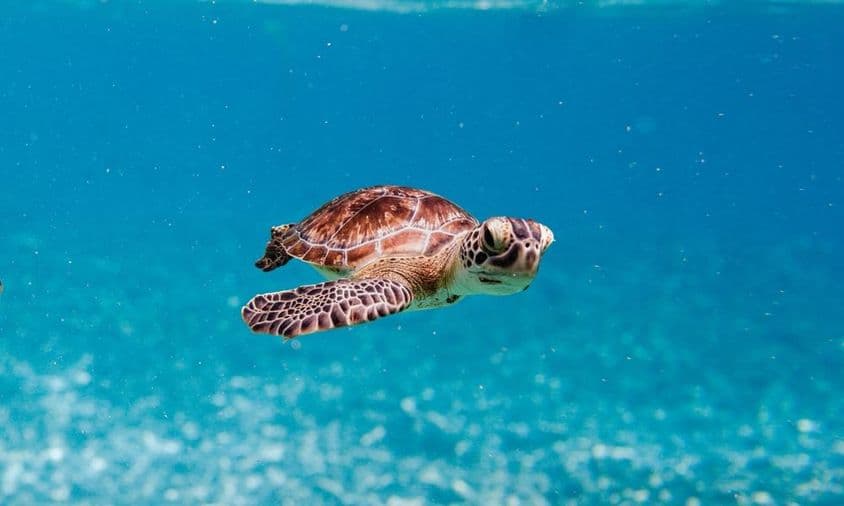Loggerhead Turtle Rescue in Arabian Gulf

Rare Sighting in the Arabian Gulf – Loggerhead Turtle Rescue
The protection of nature and marine life has always been an important topic, but in recent years, more attention has been given to the conservation of sea turtles. A special event has now come to light from Dubai, where a small loggerhead turtle (Caretta Caretta) was rescued. This event is not just about an animal rescue story, but also a scientific breakthrough that could shed new light on the lives of sea turtles in the Arabian Gulf.
Rare Sighting in the Arabian Gulf
The small turtle, rescued by the Dubai Turtle Rehabilitation Project (DTRP), was approximately seven to ten months old and was discovered in the Jebel Ali Marine Sanctuary. Loggerhead turtles are not known to nest in the Arabian Gulf, making this discovery particularly significant. According to experts, this case may suggest that the species might be using previously unknown nesting sites in the waters of the United Arab Emirates (UAE).
The director of the Jumeirah Burj Al Arab Aquarium and head of the DTRP considers the discovery as a significant breakthrough for regional sea turtle conservation efforts.
“While we knew that adult loggerhead turtles occasionally appear in the Arabian Gulf, we had no evidence that they nest or feed here. This young turtle confirms that the species indeed nests within the gulf waters,” he explained.
This discovery follows another important milestone when a green sea turtle (Chelonia mydas) nesting was first documented in Abu Dhabi in 2023. Although green sea turtles are common in the gulf, there was never evidence before that they nested here.
Why is this Discovery Important?
The biology of sea turtles is incredibly complex, and much remains unknown about their behaviors, migration patterns, and nesting locations. Every new discovery, such as this one, contributes to a more accurate understanding of these fascinating animals, enabling more effective conservation strategies to be developed.
The presence of loggerhead turtles in the Arabian Gulf poses new challenges for researchers. “Every such discovery helps us better understand the life cycle and behavior of turtles, which is indispensable for effective conservation efforts,” he added.
The Rescue and Rehabilitation Process
The rescued turtle is currently being treated at the Jumeirah Burj Al Arab Aquarium, where experts are ensuring it makes a full recovery. Afterwards, it will be transferred to the Turtle Rehabilitation Sanctuary at Jumeirah Al Naseem for further care before being released back into the sea.
The DTRP program has been involved in rehabilitating and releasing 2,196 turtles back to their natural habitats since its inception in 2004, with 89 of them being tracked via satellite. This number shows the important role the program plays in sea turtle conservation.
Why Are Turtles in Danger?
Sea turtles face numerous threats, including pollution, entanglement in nets, and habitat loss. Cold water in the winter and stormy marine conditions pose additional challenges, especially for younger turtles. In cold water, turtles become less active and more susceptible to illness. During stormy seas, they often wash ashore, unable to survive without help.
Thus, the DTRP calls on the public to report any stranded or injured turtles by calling 800 TURTLE (800 887853). If someone finds such an animal, it is best to take it out of the water and wrap it in a wet towel. It is important not to remove any shells or other creatures from the turtle's body, as this can be painful and can cause health problems for the turtle.
Conclusion
The rescue of the loggerhead turtle is not only a successful animal rescue story but also a scientific breakthrough that raises new questions about the lives of sea turtles. The work of the DTRP and its partners helps to ensure that these fascinating creatures continue to be part of the marine ecosystem.
The story reminds us that conservation is not just about protecting larger species but also involves the careful observation of the small, yet vital details. Every turtle rescued and returned to the sea is a step closer to preserving the richness of marine life in the Arabian Gulf and other parts of the world.
If you find any errors on this page, please let us know via email.


